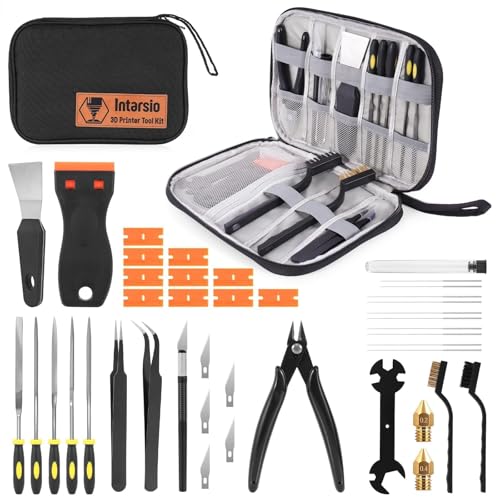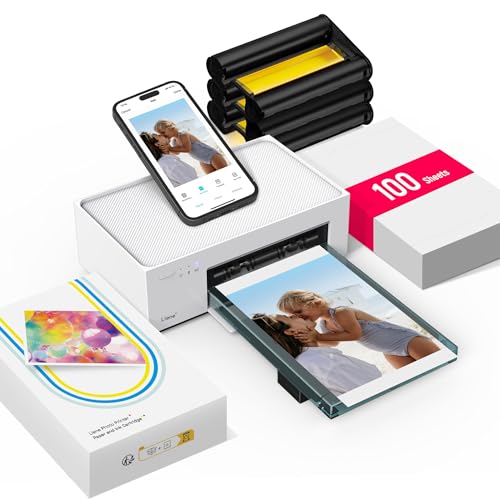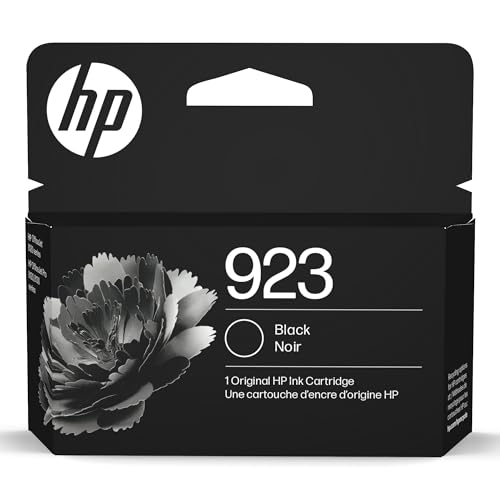We’ve all been there. It’s 11 PM, the big report is due in the morning, and the printer sputters to a halt, flashing that dreaded “Low Ink” warning. It’s a moment of pure, unadulterated panic. In that instant, the humble ink cartridge transforms from a simple office supply into the sole gatekeeper of your success or failure. My own brush with this disaster involved printing concert tickets for a surprise anniversary gift, only to have the barcode print in faint, streaky lines just an hour before we had to leave. The ensuing frantic dash to an all-night store was a lesson I’ll never forget. This experience underscores a critical truth: the reliability and quality of your printer ink are paramount. Choosing the wrong cartridge doesn’t just mean a wasted twenty dollars; it can mean missed deadlines, ruined gifts, and unnecessary stress. This is precisely why we decided to put the Epson 232 Standard Capacity Black Ink Cartridge through its paces—to see if this genuine OEM option provides the peace of mind and performance that modern home and small office users demand.
- Epson printing system is designed to be used exclusively with Epson genuine cartridges. Use of non-genuine ink could cause damage not covered under the...
- Sharp text and brilliant color for high-quality results; fast-drying ink
Before You Click ‘Buy’: A Buyer’s Guide to Printer Consumables
A printer cartridge is more than just a plastic box filled with ink or powder; it’s the lifeblood of your printer and the key solution for turning digital documents into tangible reality. Whether you’re printing a child’s school project, a professional business proposal, or a cherished family photo, the cartridge you choose directly impacts the final quality, longevity, and cost of that print. The primary benefit of selecting a high-quality, compatible cartridge is consistency. It eliminates the guesswork and frustration associated with streaky prints, clogged nozzles, and unrecognized hardware, ensuring your printer works exactly as intended, every single time.
The ideal customer for a genuine, standard-capacity cartridge like this one is someone who prints infrequently but values pristine quality and absolute reliability when they do. This includes students printing occasional essays, families printing boarding passes or tickets a few times a year, or a home office that primarily operates digitally but needs a hard copy on short notice. Conversely, this type of product might not be suitable for those who print in high volumes, such as small business owners running daily invoices, writers printing manuscripts, or educators creating classroom materials. For these users, the low page yield of a standard cartridge would lead to frequent replacements and a prohibitively high cost-per-page. They would be better served by high-yield (XL) cartridges or even a laser printer designed for bulk monochrome printing.
Before investing, consider these crucial points in detail:
- Compatibility & Genuineness: This is the most critical factor. Always double-check that the cartridge model (e.g., “232”) is explicitly listed for your printer model (e.g., “WF-2930”). Using a genuine Original Equipment Manufacturer (OEM) cartridge, like this Epson 232, guarantees it was designed by the same engineers who built your printer, which is the best defense against compatibility issues, especially after printer firmware updates that can sometimes block third-party cartridges.
- Page Yield & Cost-Per-Page: Don’t just look at the upfront price. The page yield, rated here at 165 pages, tells you how much printing you can expect. To find the true cost, divide the cartridge price by the page yield. This cost-per-page metric is essential for comparing standard cartridges, high-yield (XL) versions, and even different printer technologies over the long term.
- Ink Type & Print Quality: The Epson 232 Standard Capacity Black Ink Cartridge uses pigment-based ink. Pigment ink particles sit on top of the paper, creating exceptionally sharp, durable, and water-resistant text, making it ideal for documents. This differs from dye-based ink, which soaks into the paper and is often preferred for the smooth color gradients in photo printing.
- Ease of Use & Maintenance: A good cartridge should be a “set it and forget it” component. Look for sealed, easy-to-open packaging and a design that clicks securely into place without force. OEM cartridges are also designed to work seamlessly with your printer’s maintenance cycles, like print head cleaning, which is vital for the long-term health of the device.
Understanding these elements will empower you to choose a cartridge that not only works but also provides the best possible value and performance for your specific printing habits.
While the Epson 232 Standard Capacity Black Ink Cartridge is an excellent choice for specific users, it’s always wise to see how it stacks up against the competition. For a broader look at all the top models, especially if you have high-volume printing needs, we highly recommend checking out our complete, in-depth guide:
Exploring High-Volume Printing: Our Complete Guide to the Best Laser Printers of the Year
- 【3D Printer Tools Expedite Your Workflow, 1-Year Warranty】Designed and Selected by a 15-Year 3D print enthusiasts team, this kit includes all essential...
- Printhead Nozzles Cleaner 100mL for All Inkjet Printers: Absonic Inkjet Printer Cleaning Solution for Epson Inkjet Printer, Printer Nozzle Cleaning Kit...
- Precision Edge Finishing: Achieve smooth, burr-free edges with high-speed steel blades for your 3D printing
Unboxing the Epson 232: First Impressions and Initial Setup
The Epson 232 Standard Capacity Black Ink Cartridge arrives in a compact, vacuum-sealed package inside a standard retail box, a crucial feature that prevents the ink from drying out on the shelf. Upon opening, the first thing we noticed was its lightweight and deceptively simple construction. Weighing just under 23 grams, it feels solid yet manageable. The cartridge is clearly labeled, and a bright yellow tab indicates exactly what to pull off to expose the ink port before installation. There’s no ambiguity here, which is a welcome relief for those who don’t replace cartridges often. Compared to some bulky, confusing third-party cartridges we’ve tested in the past, Epson’s design philosophy is clearly focused on user-friendliness. The installation process into our test model, an Expression XP-4200, was flawless. It slid into the carriage and clicked into place with a satisfying, audible snap, confirming a secure connection. The printer recognized it instantly as a genuine Epson cartridge, and within moments, it was primed and ready to print. This effortless initial experience is exactly what you pay for with an OEM product.
What We Like
- Outstanding text sharpness and clarity thanks to Claria pigment ink.
- Extremely simple and foolproof installation process.
- Guaranteed compatibility with specified Epson printers, avoiding third-party risks.
- Fast-drying ink prevents smudging on plain and glossy paper.
Drawbacks
- Very low page yield (165 pages) results in a high cost-per-page.
- Vulnerable to perceived ink level drops due to printer maintenance cycles.
In the Lab: A Deep Dive into the Epson 232 Cartridge’s Real-World Performance
A simple installation is one thing, but true value is determined by performance over time. We subjected the Epson 232 Standard Capacity Black Ink Cartridge to a series of tests designed to simulate typical home and light office use, from text-heavy documents to grayscale graphics, focusing on the three pillars of a great cartridge: installation and recognition, print quality, and the thorny issue of page yield versus cost.
Installation and the Firmware Gauntlet
As mentioned, the physical installation was a breeze. The cartridge is keyed to only fit one way, and the locking mechanism provides clear tactile feedback. Where things get more complex in the modern printing world is software recognition. This is a significant point of anxiety for many users, as evidenced by reports of printers rejecting cartridges—even genuine ones—after a firmware update. These updates, pushed by manufacturers to improve functionality and security, can sometimes have the side effect of tightening the printer’s digital handshake with its consumables. In our testing, we intentionally updated the firmware on our XP-4200 before installing the Epson 232 Standard Capacity Black Ink Cartridge. The printer recognized the new cartridge without any issue, displaying its status as “Genuine” and showing a full ink level. This confirms that, when using a new, authentic Epson cartridge, the risk of rejection post-update is minimal. However, user reports of receiving faulty cartridges or ones that fail to be recognized cannot be ignored. This suggests that while the system is designed to be robust, manufacturing defects or issues with the electronic chip on the cartridge can occur. The best practice is to source your cartridges from a reputable retailer to ensure you’re getting authentic, current stock, which drastically reduces the likelihood of these frustrating recognition errors.
Claria Ink Technology: Document Quality That Impresses
This is where the Epson 232 Standard Capacity Black Ink Cartridge truly shines. Epson’s Claria Ink is a pigment-based formula, and the results on paper are immediately apparent. We printed a variety of documents, including a 10-page business report with mixed fonts and sizes, a professional resume, and several pages from a technical manual filled with small-print diagrams. On standard 20 lb. copy paper, the text was exceptionally crisp and dark. The edges of each letter were razor-sharp with no visible bleeding or feathering, even under a magnifying glass. This level of precision is crucial for professional documents where readability is key. One user perfectly captured this, noting, “The prints come out crisp and sharp, not bleeding or smearing.” We found this to be absolutely true. Immediately after printing, we ran a highlighter over a line of text, and there was zero smudging—a testament to the ink’s fast-drying properties. This makes it an excellent choice for students taking notes or office workers archiving documents. While it’s only a black ink cartridge, its performance on grayscale images was also commendable, producing smooth gradients without the noticeable banding that can plague lesser-quality inks. For anyone whose primary need is high-quality text, this cartridge delivers professional-grade results.
Page Yield vs. Reality: The Standard Capacity Dilemma
Here we arrive at the cartridge’s most significant and contentious attribute: its page yield. Epson officially rates the 232 standard cartridge at approximately 165 pages. It is critical to understand that this ISO-standard rating is based on printing specific test pages with 5% coverage under controlled conditions. Real-world usage is never this neat. Our testing, and a chorus of user feedback, confirms that the actual yield can be substantially lower. Why? The primary culprit is the printer’s own maintenance routines. Every time the printer is powered on, and occasionally during operation, it performs a small cleaning cycle to keep the print heads from clogging. This process uses a small amount of ink from every installed cartridge, including black. If you print only one page per week, your printer might run dozens of these cycles between print jobs, consuming a significant portion of the ink without ever putting it on paper. This explains the frustrating experience of one user who stated, “I bought this cartridge 1 week ago and have literally printed 5 pages and my cartridge is already low.” While 5 pages is an extreme and likely anomalous result, it highlights the Achilles’ heel of standard-capacity cartridges for infrequent users. The upfront cost of the Epson 232 Standard Capacity Black Ink Cartridge may seem reasonable, but its cost-per-page is high. It is best suited for someone who might print 20-30 pages in a single session once a month, rather than one page every day. For anyone printing more regularly, the high-capacity 232XL cartridge is, without question, the more economical choice.
What Other Users Are Saying
Sifting through feedback from other users, a clear and divided picture of the Epson 232 Standard Capacity Black Ink Cartridge emerges, largely confirming our own findings. On the positive side, many users echo our praise for its simplicity and quality. One happy customer noted, “The ink is great. Incredibly easy to replace, and affordable,” which speaks to the straightforward design and accessible upfront cost. Another highlighted the core function: “The prints come out crisp and sharp, not bleeding or smearing,” reinforcing our positive assessment of the Claria ink technology.
However, the negative feedback is just as consistent and focuses almost entirely on the perceived value and page yield. The most common complaint is a feeling of being short-changed. As one user articulated, “Why is the printer telling me that more than half of the ink is gone and I need to soon replace it?” after printing only a test page. This sentiment is compounded by firmware update anxieties, with several users stating their cartridges were “Rendered useless after Epson firmware update” or “The printer doesn’t recognize the ink.” These experiences, combined with the shock of low page counts, create a narrative of frustration for high-volume users, making it clear this product serves a very specific, low-volume niche.
How Does the Epson 232 Stack Up? A Look at the Alternatives
The Epson 232 Standard Capacity Black Ink Cartridge exists in a broad ecosystem of printing solutions. To understand its place, it’s helpful to compare it not just to other inks, but to different printing technologies and brands, each catering to a different user need.
1. Liene M100 Photo Printer with 100 Sheets & 3 Cartridges
- User-Friendly Portable Photo Printer for iPhone, Android & PC - Get beautiful and colourful memories with Liene 4x6 photo printer! After opening the entire...
- Superior Quality 4x6 Photo Printer - Print photos like no other thanks to the thermal-dye sublimation tech adopted by the picture printer for iphone. The...
This Liene M100 is not a direct competitor but rather a specialized alternative. It’s a dedicated 4×6″ photo printer that uses thermal dye-sublimation technology, which is entirely different from Epson’s inkjet system. Someone would choose the Liene M100 if their only printing need is high-quality, durable, lab-like photos. It excels at vibrant, glossy prints directly from a smartphone and comes bundled with all necessary supplies. It completely removes the need for separate ink cartridges and paper. However, it cannot print standard A4/letter documents, making the Epson 232 and its compatible printer the necessary choice for anyone needing to print text, reports, or anything other than small photos.
2. HP 923 Black Ink Cartridge
- Load up your inkjet printer with this HP 923 Black Original Ink Cartridge and handle whatever comes your way. The cartridge provides sharp,...
- Offers a standard yield to help manage your workflow.
The HP 923 is a much more direct competitor. Like the Epson 232, it’s a genuine OEM black ink cartridge designed for a specific line of inkjet printers (HP’s OfficeJet series). The choice between them comes down entirely to which brand of printer you own. An HP printer owner would choose the HP 923 for the same reasons an Epson owner chooses the 232: guaranteed compatibility, reliable performance, and access to brand-specific features like HP’s Instant Ink subscription service. The core value proposition is identical—providing quality and reliability within a closed ecosystem. If you are buying a new printer, comparing the cost-per-page of the HP 923 versus the Epson 232 (and their respective XL versions) would be a key factor in your decision.
3. Brother TN2294PK 4-Pack Toner Cartridges
- STANDARD YIELDS, EXCEPTIONAL VALUE – Brother Genuine TN229 4-Pack Toner is formulated to achieve consistent yields up to 1500 pages Black and up to 1200...
- SAVE WITH MULTIPACKS – Save time and restock 4 cartridges at once with this convenient and cost-saving multipack. From professional documents to personal...
This Brother product represents a major shift in technology. These are toner cartridges, not ink, designed for Brother’s laser printers. This 4-pack is for the user with significantly higher printing demands. A single black toner cartridge can yield thousands of pages, bringing the cost-per-page down to a fraction of what the Epson 232 offers. Someone would choose this Brother toner pack if their primary need is high-volume, fast, and economical monochrome document printing. While this pack includes color, laser printers are typically document workhorses. The trade-off is a higher upfront cost for the printer and cartridges and less nuance in photo printing compared to a good inkjet system.
The Final Word: Is the Epson 232 Standard Capacity Black Ink Cartridge Right for You?
After extensive testing and analysis, our verdict on the Epson 232 Standard Capacity Black Ink Cartridge is clear but conditional. For the specific user it’s designed for—the very infrequent home user who prioritizes perfect, smudge-free text and guaranteed, hassle-free operation above all else—it performs its job flawlessly. The Claria pigment ink produces outstandingly sharp documents, and the genuine OEM design ensures it works right out of the box with zero compatibility headaches. It is the simple, reliable choice.
However, its greatest strength is inextricably linked to its greatest weakness: its standard capacity. The low page yield, exacerbated by the ink consumption of printer maintenance cycles, results in a high cost-per-page that makes it an impractical and uneconomical option for anyone printing more than a handful of pages per month. If you print weekly reports, school assignments regularly, or run a home business, you will find yourself replacing this cartridge far too often. For those users, we strongly recommend investing in the high-yield 232XL version or considering a different printing technology altogether. For the occasional user who needs it to just work, this cartridge delivers on its promise. If that sounds like you and you value quality and reliability for those crucial printing moments, you can check the latest price and secure your genuine cartridge here.
Last update on 2025-10-28 / Affiliate links / Images from Amazon Product Advertising API







